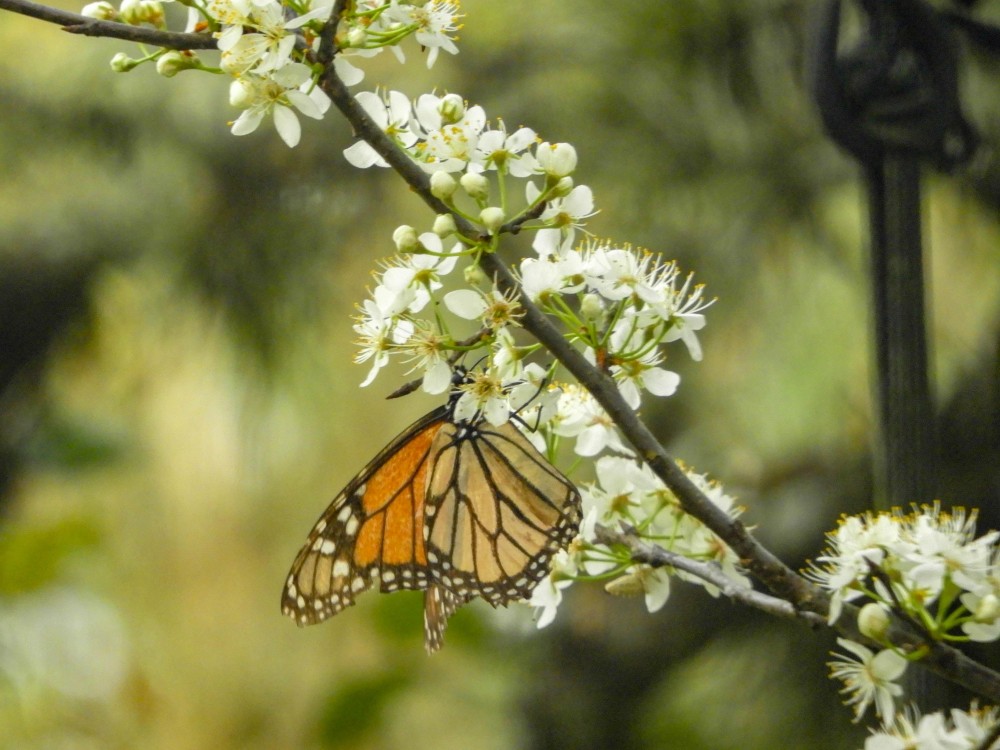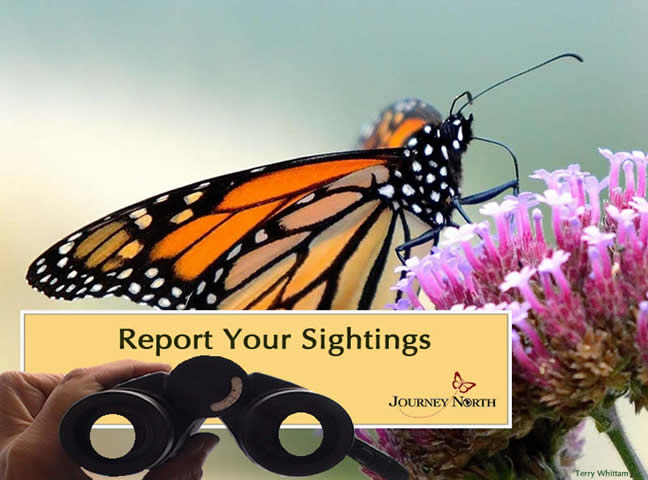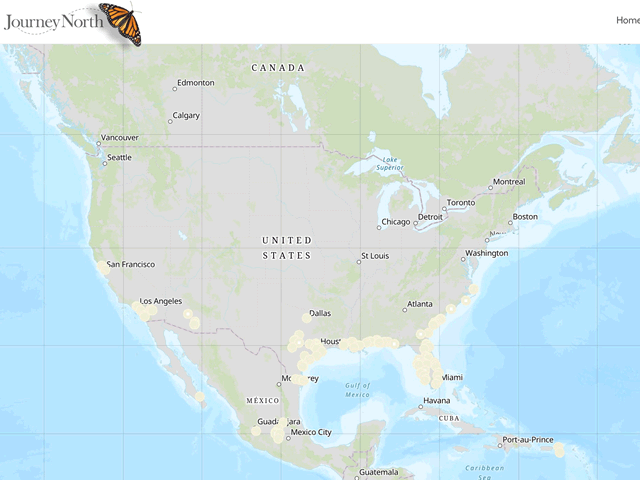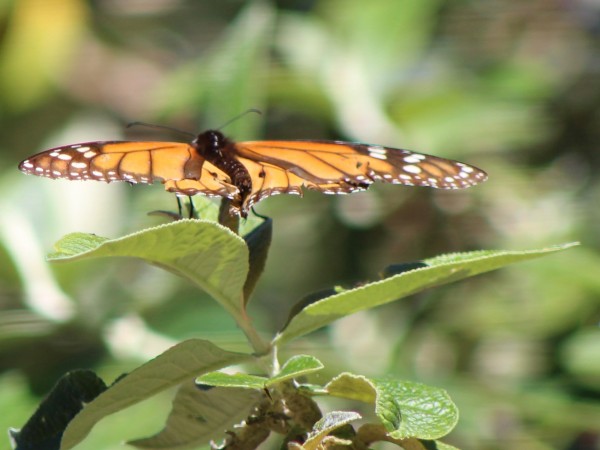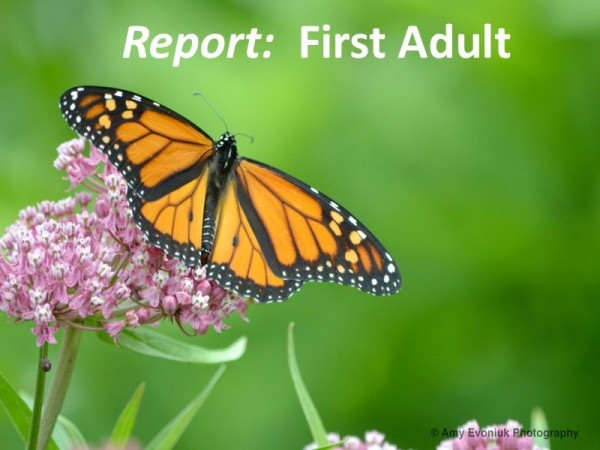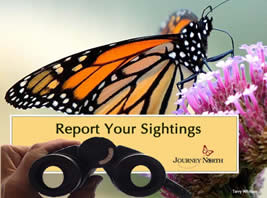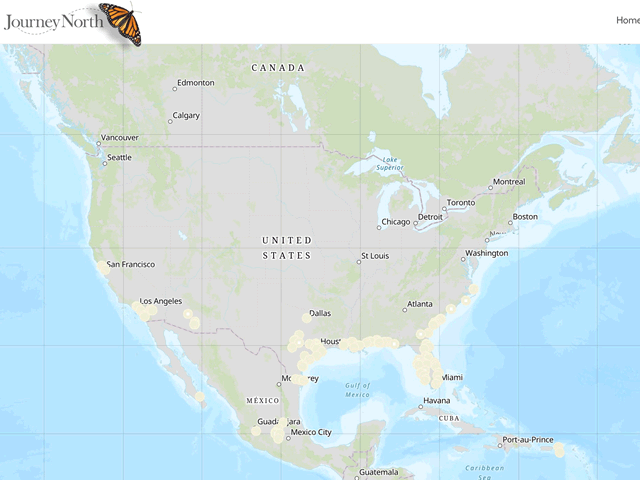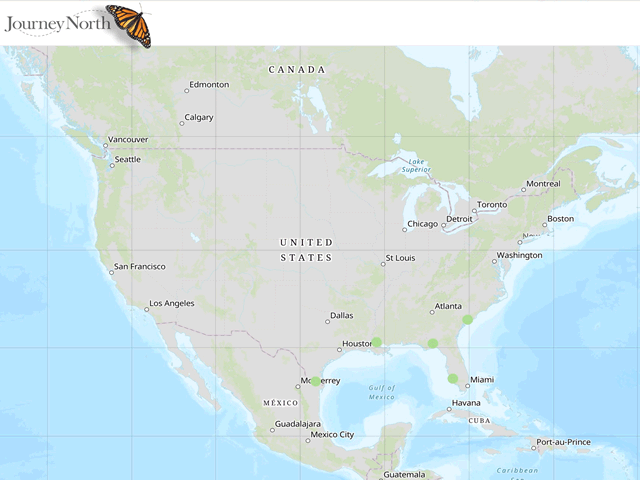Migration Entering Texas
Advance of the Migration
The migration’s leading edge has already reached Austin, Texas where milkweed is beginning to emerge as the monarchs arrive. With many butterflies still at the overwintering sites, the migration is spread across 700 miles.
"She was laying eggs today," reported an observer from Austin on March 10th.
As he monitors the migration and the weather, Dr. Chip Taylor of Monarch Watch will try to predict if the population will increase again this year.
“There is good news, some questions, and perhaps more good news.…”More...
Observations Raise Valuable Questions
Are the butterflies now being reported in Texas coming up from Mexico? The migration map shows monarchs were there during the winter months. They were also sighted along the Gulf Coast and up the Atlantic as far as South Carolina. Are those monarchs migrating this spring? Nobody knows! Observations contributed by citizen scientists raise valuable questions about topics that need more research.
News from Mexico
Monarchs continued to pass in large numbers this week through the states of Guanajuato and Querétaro, and have begun to increase in Coahuila and Nuevo Leon, says Rocio Trevino of the migration tracking project, Correo Real. Estela Romero says many monarchs still remain at the overwintering sites. More...
Western Population News: Questions About Spring Migration
Gail Morris of the Southwest Monarch Study reports few monarch sightings this week in the West. "With an already smaller than usual monarch population, everyone will be watching!" More...
Watch Carefully!
Painted Ladies (Vanessa cardui) are migrating by the thousands in California right now. The butterflies are much smaller than the monarch and they are far more numerous. Can you distinguish a monarch from look-alike butterflies?
Spring Migration 2019
Report all monarchs you see — adults, eggs, larvae.

